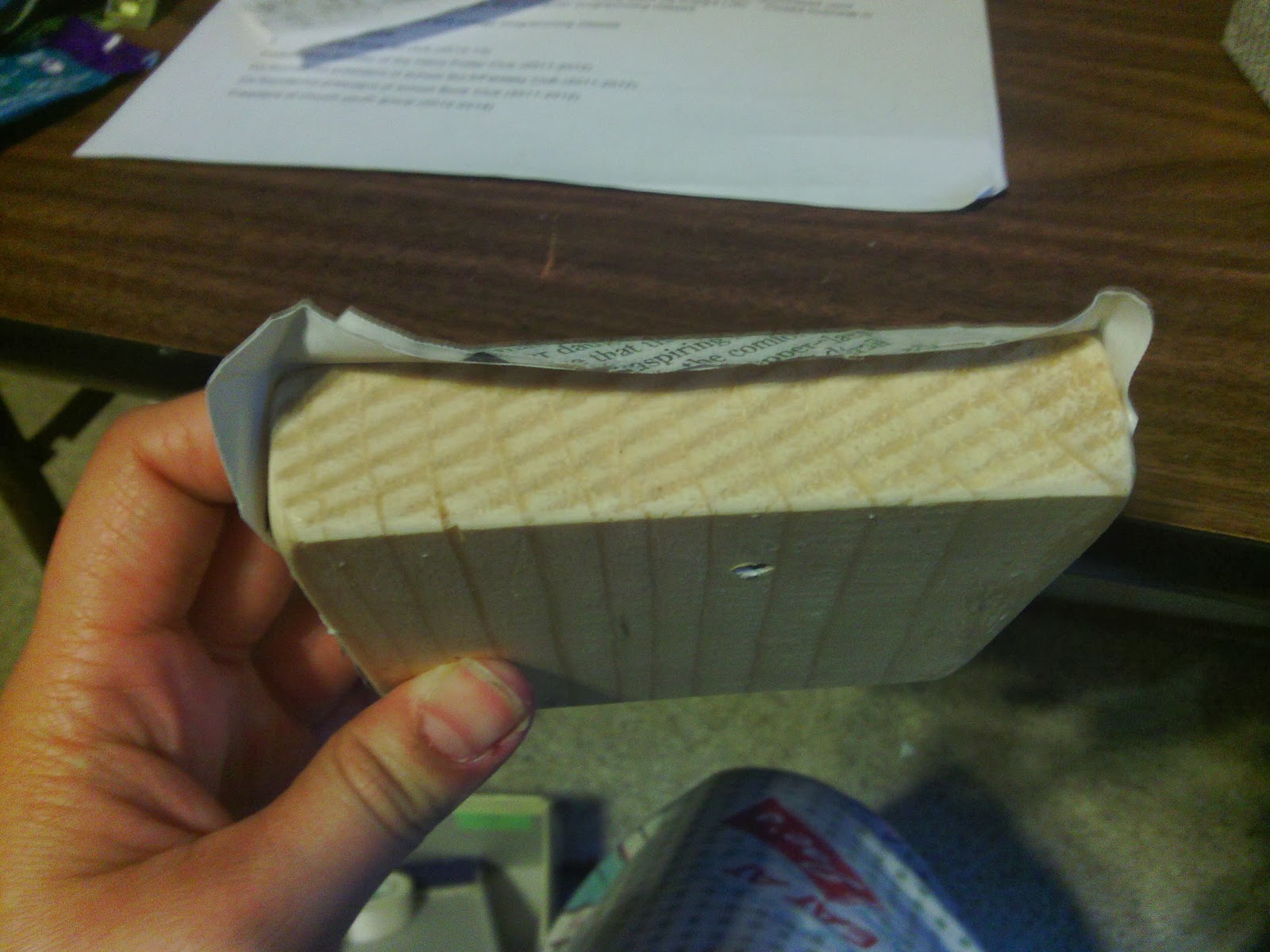For those of you who don't immediately recognize this awesome pillow of epicness, here is the reference:
 Of course, my pillow's suit is the wrong color, but this doctor often/sometimes wears a blue suit. About half the time. In any case, it looks cool, and that's the real point. For those of you who want to be more canonically accurate, go for the brown suit.
Of course, my pillow's suit is the wrong color, but this doctor often/sometimes wears a blue suit. About half the time. In any case, it looks cool, and that's the real point. For those of you who want to be more canonically accurate, go for the brown suit. In any case, on to directions. I started this pillow out much the same as I did the other one. I used cloth of the same dimensions (~11"x11"), and set to research. Luckily, a rather awesome Etsy shop-owner saved me a lot of time and effort by giving me some awesome pictures on which to base my pillow. I made some minor tweaks, but essentially copied her, so anyone wanting one, but not wanting to spend the time to make it, head over here to buy one for yourself. On a side note, had I looked a bit harder/farther, I would have also found a good pattern base for my Sherlock pillow, but oh well. Live and learn.
In any case, on to directions. I started this pillow out much the same as I did the other one. I used cloth of the same dimensions (~11"x11"), and set to research. Luckily, a rather awesome Etsy shop-owner saved me a lot of time and effort by giving me some awesome pictures on which to base my pillow. I made some minor tweaks, but essentially copied her, so anyone wanting one, but not wanting to spend the time to make it, head over here to buy one for yourself. On a side note, had I looked a bit harder/farther, I would have also found a good pattern base for my Sherlock pillow, but oh well. Live and learn.I laid out a few of my pieces of scrap cloth, and found these two almost-symmetric pieces that were rather nicely sized/shaped for a suit, so I used them.
I pretty much just shopped those pieces off, then folded the edges over after cutting a suit shape out of them. And then, of course, came pins.
(insert gasp here)
Yes, I know that I don't use them very often, but in this context they were necessary, as the cloth for the suit was somewhat thick and rather stiff.
This is a close-up on how I did the suit shape. I very seriously just folded it over and nocked the top like so.
And repeat for the second side.
I then cut out a rectangle that would fit underneath both sides completely.
At this point, I realized that I should have done that in the first place, as I had to unpin and repin the lapels, but there we go.
Next, I cut out a piece of red cloth for the tie.
Again with the pinning.
I then cut out the hair, and.. you guessed it! I pinned it in place. Pins on hair not featured, but they were there at one point.
Then with the eyes. I liked how this looked, but it didn't seem distinctly doctor-ish yet. I fix that later.
I then sewed everything on. Order: white rectangle (again with the unpinning...), blue rectangles, red tie, hair, eyes.
The only part I folded over to hem was the top of the blue parts, white part and tie. The lapels, hair, tie edges and eyes were all left as they were, so after a few washed, this doctor will probably turn into the raggedy doctor, but who uses a pillow as cute as this for anything that would get it dirty enough to really need to wash?
...on second thought, don't answer that...
I then sewed it together. This pillow's hair was considerably shorter on the edges than my last one, so stuffing it was somewhat more difficult.
It looked cute when I was done, but partially due to the aforementioned small hole, this pillow required quite a bit more beating at to get the stuffing even.
On the upside, the smaller hole presents less opportunity for me to make an eyesore.
Also a plus, my stitching on this one looked much neater than the last one.
Please, also take time to note that unfinished, unsurged flippy of hair. Remember what I said about not hemming.
And tadaa! One pillow done. I thought he should look more doctor-ish, though, so I deccided to grab some inspiration from the aforementioned Etsy-shop-owner, and made some 3D glasses.
Unlike hers, though, mine are removable, and wrap around the pillow, allowing them to seem somewhat more glasses-like. I took extra cloth from the lapels, and extra cloth from the tie, sewed them on a strip of white cloth, then notched out holes around the nose area. This one I did hem, but I realized afterwards that I should have done this first, as I almost ran out of room, and once again my colors were unhemmed.
Example of how extremely glasses-like these 3D glasses are.
And voila! Your very own 10th Doctor Chibi pilow!

















































